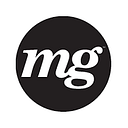Enhancing Email to Improve Engagement
I’m just going to be blunt: Nobody wants to read your marketing email.
Consider the average inbox. Whether the account is personal or corporate, it receives dozens of emails every day ranging from notes from friends to critical company memos, marketing come-ons, and sales pitches. Even the average website is covered with pop-ups and banner ads, and Google returns “sponsored” search results.
People realize a huge chunk of what they see online or receive in email is marketing-related, and we’ve all trained ourselves to filter out the noise. Ads only catch our attention when they speak to us, especially if they do so quickly and effectively.
According to Facebook, 65 percent of people who make it past the first three seconds of a video spend at least ten more seconds watching, and 45 percent of that group sticks around for a full thirty seconds. But that engagement rate is not just for video. The first three seconds are the most critical component for any content.
How do we capture readers in that critical first three seconds?
For starters, make sure you understand your target audience — specifically, their pain points. What problem or challenge do you propose to solve for them? What are their biggest concerns? What motivates them to purchase? Details like these will be endlessly useful for all your communications.
Next, define your product’s unique selling points. What makes your product different? What makes your product appealing? What is your overall positioning when publicly speaking about your product or service? These details will deliver the key takeaways customers should remember.
When crafting your message, always remember the sales pitch should focus on the potential customer, not you. How will your product make their life better? No one will care how fantastic your product is, how many awards it has won, who else uses it, or even how big a discount you’re offering if they don’t understand how the product will benefit them personally. Make that clear up front and save everything else for later.
A common corporate instinct is to cram as much information as possible into every marketing email. People are tired of that. More importantly, people don’t have time for that, and they’re smart enough to know when they’re being sold to. Instead, get to the point, telling your customers what they’re ready to hear when they’re ready to hear it.
How to build a better email for 2024
According to Campaign Monitor, three in five consumers and more than one in three professionals check their inboxes on their mobile devices; 75 percent of those people use their mobile phones for email. (The others use tablets.) Strikingly, nearly 50 percent of recipients admit being annoyed when they receive email that’s not formatted for mobile viewing, and they delete it without reading. On the flip side, 65 percent of users have clicked on a link they received in a mobile email.
Obviously, taking a mobile-first approach to marketing email is a smart choice.
In the email world, the subject line is the single biggest contributor to success. A good subject line convinces recipients to open the email — and without that crucial first step, whatever else you present won’t matter. Mobile devices display only fifty characters in the subject line, so make yours short and descriptive. Start with an active word to invite the recipient in, and then quickly let them know what benefit they’ll receive from reading what’s inside. Remember those pain points you defined earlier? Offering to solve one of them will help you get your target over the first hurdle.
The body copy is where all the product positioning and customer research comes into play. It’s a lot easier to speak confidently about one thing at a time, so what’s the one thing you want people to remember? You’re still in a race against time. The average person can read three to five sentences (roughly 400 to 500 characters) in three seconds, but with the right pitch, that’s all you need.
Many marketing and sales professionals think emails must be exhaustive, explaining every aspect of the product or service and why it will improve the email recipient’s life. They’re wrong. Employ the rule of three: Make three clear points, and keep them simple. Ideally, those three points will intrigue the reader and leave them with compelling questions … which you’ll answer after they respond to your call to action (CTA).
A CTA is your last chance to get someone to take the next step into your digital ecosystem. Again, think in terms of three: The CTA should comprise no more than three words (about 25 characters) and be simple, active, urgent, and creative. Avoid generic copy like “open now” or “click here.” Instead, use a word or phrase that’s consistent with your brand voice and relates to the body copy in both topic and tone. The ever-popular “while supplies last” creates a sense of urgency, while phrases like “grab the goods” and “take the leap” hint at a bit of fun.
The best brands treat every communication as an invitation. With the right email, you can create meaningful conversations with any customer. Just remember time is the one thing money can’t buy, and nobody has enough of it. Respect customers as you’d want to be respected by keeping your marketing emails brief, intriguing, and informative, and watch your engagement soar.
Originally published at https://mgmagazine.com/business/marketing-promo/enhancing-email-to-improve-engagement/ on May 29th, 2024.

